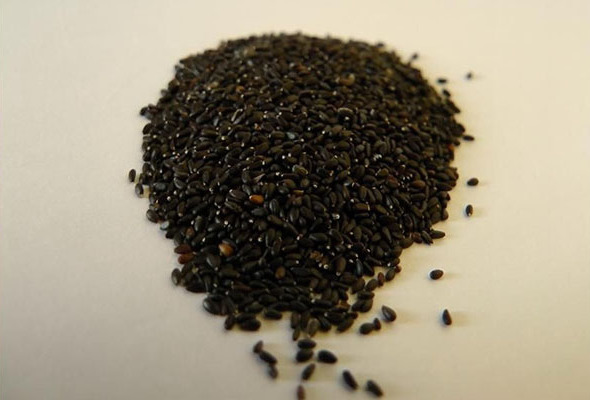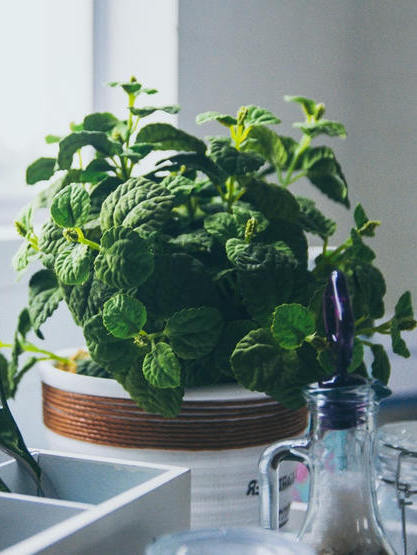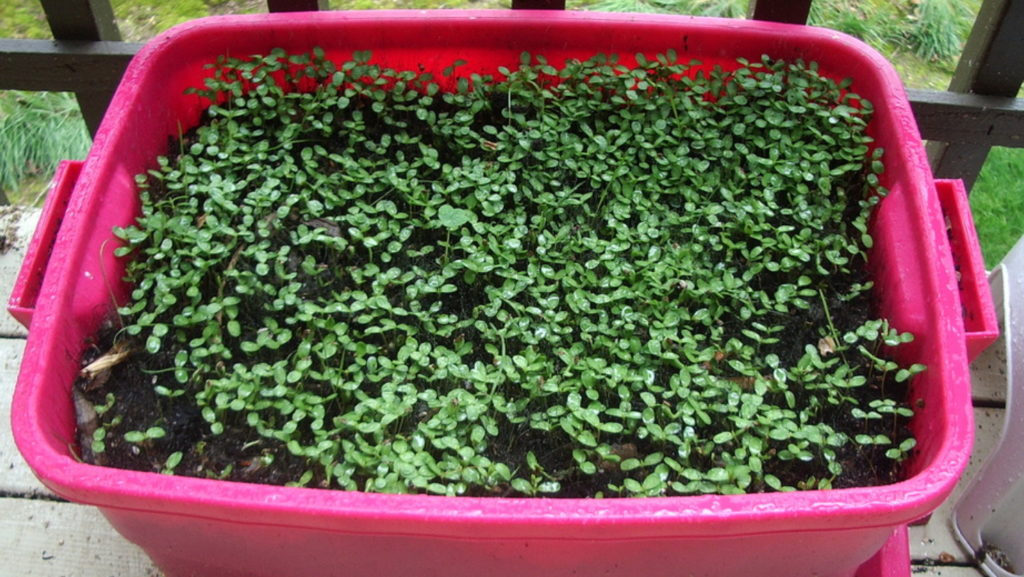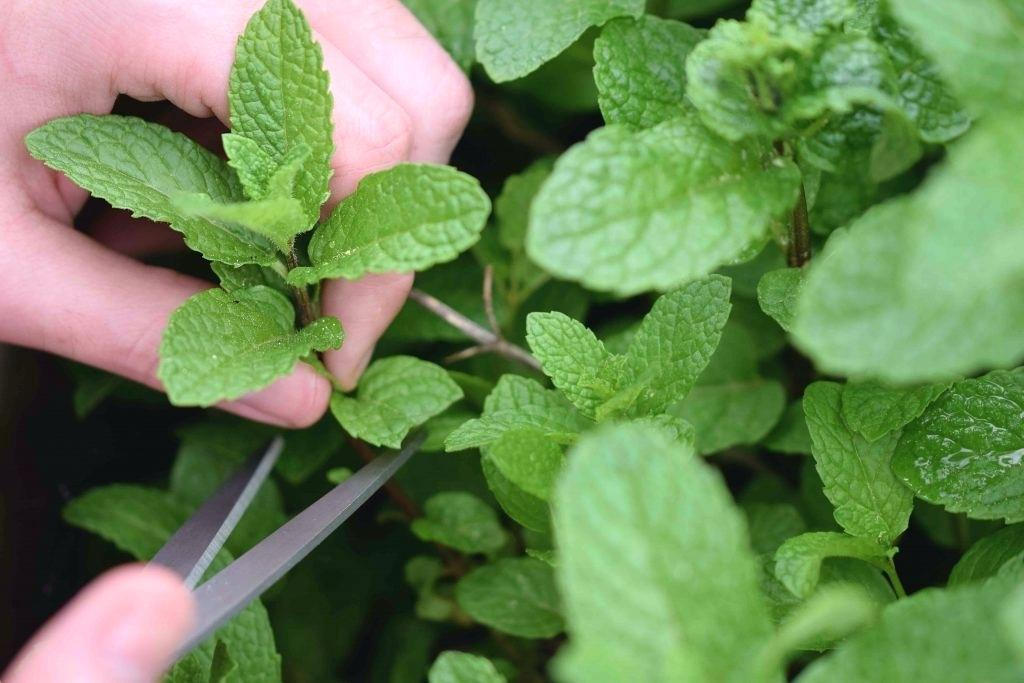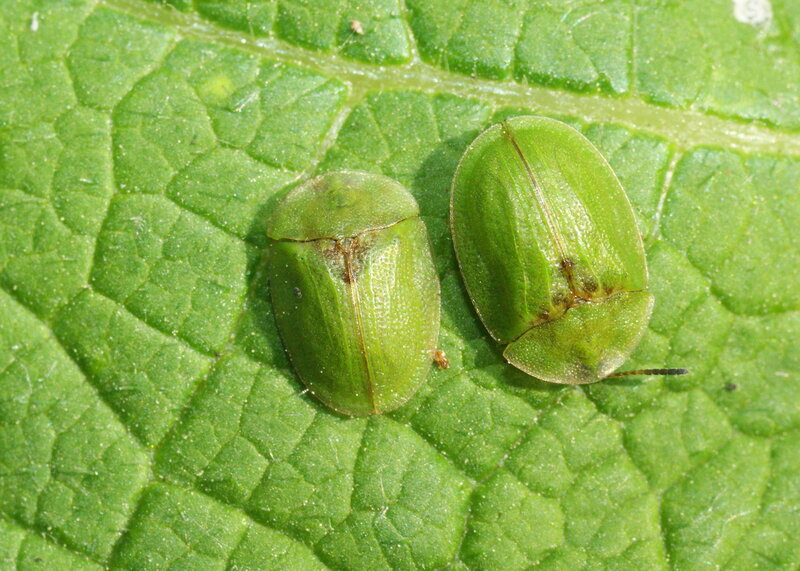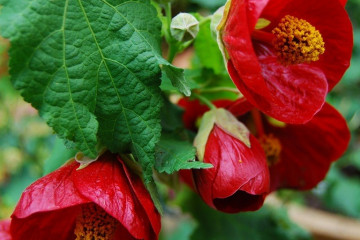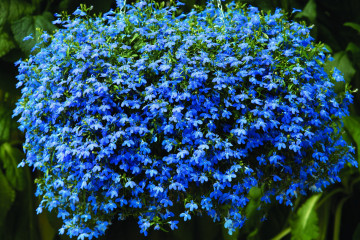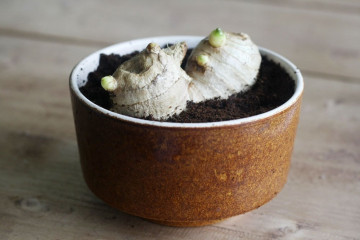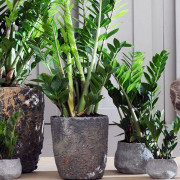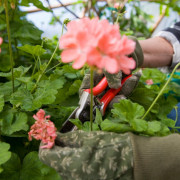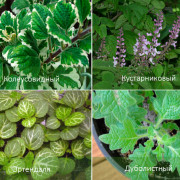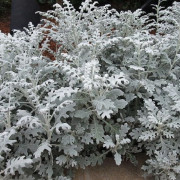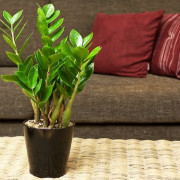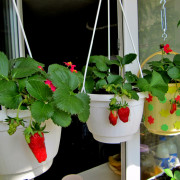How to grow mint at home on a windowsill
Content:
Mint is a herb that can be brewed as a tea and eaten. Usually it is planted in the garden and the fragrant leaves are collected throughout the season. If you want to please yourself with a fragrant plant right in the apartment, the best option is to grow it on a windowsill, mint easily takes root at home.
Mint varieties for growing on a windowsill or balcony
Mint is a picky plant, almost any species can be grown at home.
Often the following varieties are planted in pots:
- Pearl is a medium-sized bush with wrinkled dark leaves. The smell differs from other varieties with spicy notes;
- Penniroyal is a small bush that grows quickly. Small leaves grow densely and compactly, have an intense aroma;
- Fun. This variety is called vegetable mint, it looks like a small branched bush. Cooling aroma, has a pronounced menthol flavor;
- Strawberry mint is a garden variety that does well in a pot. Combines aromas of mint and ripe strawberries, sometimes with chocolate notes;
- Ceremony. Leaves with a relief surface of dark green color. The central stem is well developed, if not pinched, the mint grows rapidly in height;
- Kuban is a variety of peppermint that grows equally well in a garden and a pot. Differs in a high content of essential oil in the leaves and a pungent odor;
- Lemon mint, another name is melissa. It takes root well in the apartment, has a complex scent of mint with a lemon shade. More susceptible to fungal diseases than other varieties, does not like excess moisture;
- Flea mint is a low-growing, heat-loving plant whose leaves are used in cooking as a seasoning. Contains a large amount of essential oils. If placed on the balcony in the summer, it will scare away insects;
- Plectrantus is called room mint and is intended for home cultivation. The evergreen has a scent that repels moths. A decoction is made from the leaves, which helps to cope with respiratory diseases.
Planting mint seeds in pots
Mint on the windowsill in the apartment is real, mint seeds take root quickly enough. The main disadvantage is that the seeds are small in size, which makes them inconvenient to use.
Varietal seeds can be purchased at the store; when buying, you need to pay attention to their shelf life. The seed can be collected independently from an adult plant after flowering. The seeds of cultivated mint have a higher germination rate in comparison with wild-growing ones.
What is needed for landing
The best time for sowing is March or the first half of April, during which daylight hours increase.Already at the beginning of summer it will be possible to harvest the first crop. Before you grow mint at home on the windowsill, you need to prepare everything. What you need:
- The right kind of mint seeds. Not all have a high germination rate, therefore, when sowing, their number must be increased;
- Paper or cloth napkin for soaking seeds;
- A wide container or flowerpot for germination, at least 20 cm in diameter. The mint roots grow in width, so you need to choose wide containers, there should be holes at the bottom to drain the liquid;
- Cling film or glass. Transparent plastic will do;
- Water;
- Drainage: small pebbles or expanded clay;
- Priming. Any fertile and loose substrate is used for planting. You can choose peaty soil with coarse sand or any commercial substrate for herbaceous plants.
Optimal window for growing seedlings
Despite the unpretentious nature of the plant, it is necessary to choose the right place for growing seedlings. It is enough to follow simple rules:
- Seedlings should receive enough heat and sunlight, a container with crops can be placed on a windowsill near the southeast or southwest window;
- It is allowed to be placed near the south window in the morning and in the evening, also if the plant is in the shade of other flowers, or it is cloudy outside;
- Mint does not tolerate direct sunlight; leaves can dry out from them. At lunchtime, seedlings should not stand on the windowsill on the south side without shading, for this time they need to be removed in the middle of the room;
- It is undesirable to put the pot near the north window. In the shade, the stems of the plant will be thin, the leaves are small and with a weak aroma.
Step-by-step planting process
The seeds can be sown directly into the soil with which the pot is filled. After germination, the mint will not be transplanted to a new place, you must immediately select a suitable container. How to plant correctly:
- First, the seeds are poured onto a damp cloth, covered with a piece of cling film on top, left for 2-3 days;
- It is necessary to prepare flowerpots or containers for sowing in advance, a drainage layer 2-3 cm high is poured onto the bottom. The containers must be filled with earth and moistened with warm water;
- The seeds should be spread out on top of the ground and compacted a little by hand. You cannot bury them, they may not germinate at great depths;
- Moisten the soil again with warm water from a spray bottle;
- The pot must be tightened with foil or covered with glass. Every day the soil is ventilated for 10-15 minutes. When the first shoots appear, the cover is removed and the mint continues to be taken care of.
For larger seedlings, the seeds can be pre-germinated before planting in the pot. To do this, they are sown in a temporary container in the same way, but without preliminary soaking. From above, the container is tightened with a film or covered with glass, every day it is ventilated for 15 minutes.
The first shoots appear as early as 2-3 weeks, they are dug up and transplanted into separate pots. When the seedlings grow up to 4-8 cm in height, they must be tied to pegs so that they do not fall over.
Caring for mint in a pot on a windowsill
Mint grows at home in a pot, it is easy to rearrange it in the right place. The plant loves warm weather and should be kept in a room at a temperature of 23-26 ° C. In summer, mint can stand on a balcony or loggia. During the heat, a container with water should be placed next to the plant, which will maintain normal air humidity.
In winter, the plant must be removed from the window and placed in a warm place where the temperature will be maintained at 17-20 ° C. Mint does not tolerate cold, low temperatures are harmful to the plant.
Watering mode
At home, mint in a pot requires regular moistening of the soil; it should not be allowed to dry out. Excess moisture is also detrimental to the plant, from which the root system will rot. Watering rules:
- The plant is watered when the top soil layer is completely dry. In summer, 2-3 moistening of the soil is required per week with a small amount of water. The liquid should not stagnate;
- In winter, watering is reduced to 1 time per week if the temperature does not exceed 17-22 ° C;
- In addition to watering, the plant is regularly sprayed with water as dust accumulates;
- Water the plant with soft water. Before use, it should stand in open bottles for at least 3-4 days.
Top dressing
At home, mint requires a little feeding, it is enough to apply fertilizer in the summer 1 time. The plant is fed with liquid fertilizer, for this, 0.5 g of urea is diluted in 500 ml of water. At the time of the formation of the first leaves, it is allowed to use a small amount of mineral fertilizers.
Mint does not require a large amount of fertilizers, the concentration indicated on the package must be reduced several times. In the cold season, you do not need to fertilize the plant.
Harvesting
Depending on the variety, in 2-3 months after sowing, the stems grow to the desired size. Shoots can be cut when they reach 14-18 cm in length. Potted mint grows quickly, pruning is done regularly. How to do it correctly:
- It is recommended to tear off mint leaves at a distance of 1.5-3 cm from the stem - this promotes the growth of new lateral shoots;
- You can not pluck the shoots completely. The stems are cut off no more than 1/3 of the length, otherwise further growth may stop;
- The most fragrant leaves with a large amount of menthol grow after the appearance of peduncles, but before flowering;
- During the flowering period, all nutrients are spent on the formation of inflorescences. It is necessary to cut off the upper part of the bush 10-15 mm above the junction of the main and side stems;
- Store the cut mint in the refrigerator in a ventilated container. Stems that did not have time to be used can be dried.
Possible difficulties of growing
Before growing mint at home, you need to familiarize yourself with the possible difficulties. Problems can arise when transplanting mint from the garden, in which case you can accidentally plant a plant infected with diseases and pests. Household varieties are susceptible to disease and pests, as are garden plants.
Diseases
The main problem is the appearance of rust on the leaves. The disease is fungal in nature, manifests itself in the form of dark red spots on the leaves. Reasons for the appearance:
- Excess and stagnation of water, high humidity in the room;
- Low temperature and frequent drafts;
- Excess nitrogen in the soil.
The affected stems must be cut off, the remaining ones are treated with fungicides. The treated mint leaves are soaked in cold water for 30 minutes before use.
Such fungal diseases are common:
- Powdery mildew. It has the appearance of a white bloom on shoots and leaves, formed during the hot season. Treatment of the plant with a solution of colloidal sulfur of 1% concentration will help to get rid of the problem;
- Anthracnose and septoria blight appear as brown and brown spots on the leaves. The affected plant is treated 3-4 times with a Bordeaux mixture with a concentration of 1%;
- Verticillosis - during illness, the leaves wither, at the edges they begin to darken. Fungicides are used to eliminate the disease, but they do not give a 100% guarantee that the problem will be solved.
Pests
Despite its intense aroma, mint attracts insects. Some of them grow in soil and can infect healthy plants. This problem can arise if mint is planted in garden soil that has not been disinfected before.
The main pest is the mint flea, which starts in warm, dry weather. An insect no more than 1.5 mm in size gnaws round holes on the leaves. Similar damage is left by leaf beetles and green scale insects. Together with the soil, weevils and mint mites can get into the pot.
A real storehouse of vitamins in the cold season is mint on the windowsill, which can be grown even by a novice grower. The fragrant and useful plant is unpretentious in care, it takes root easily and grows quickly.

